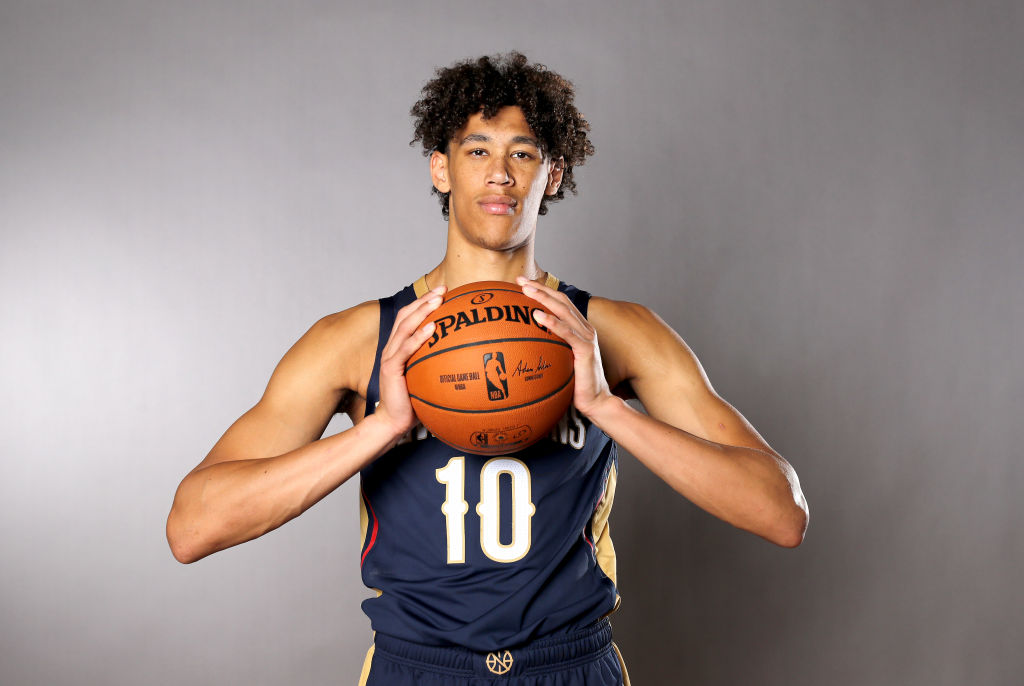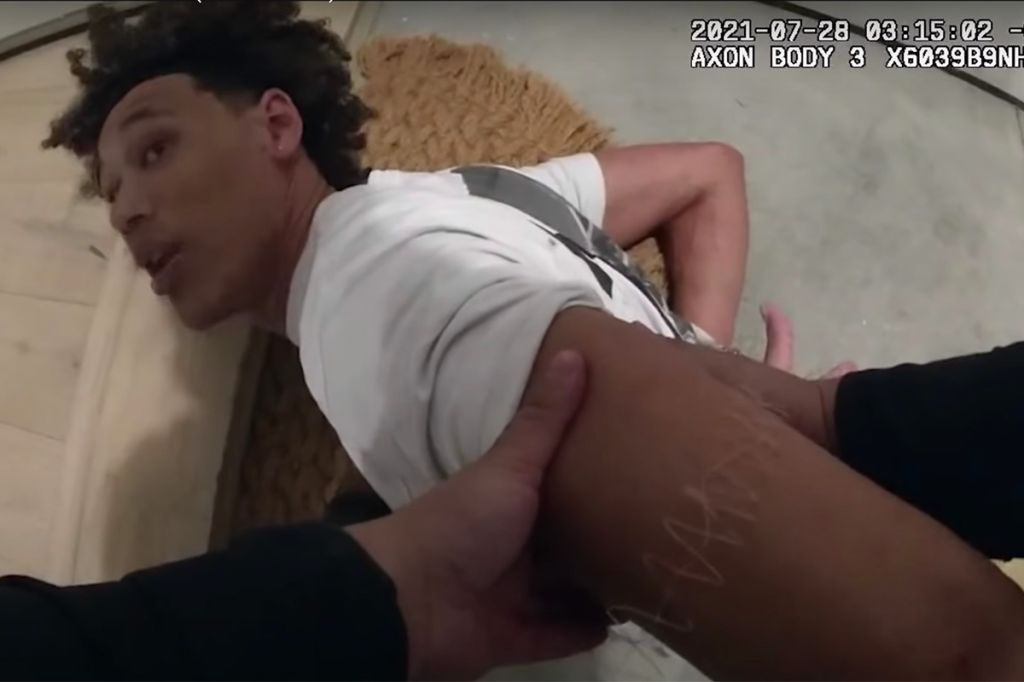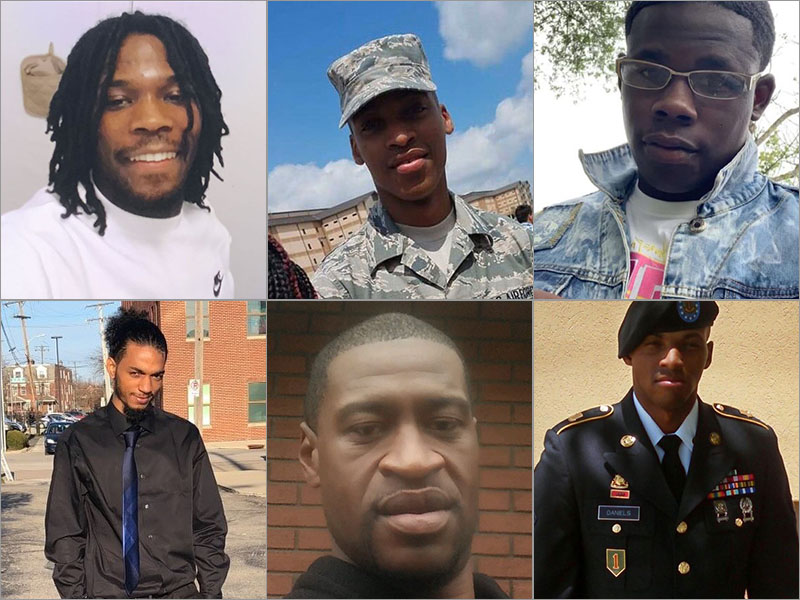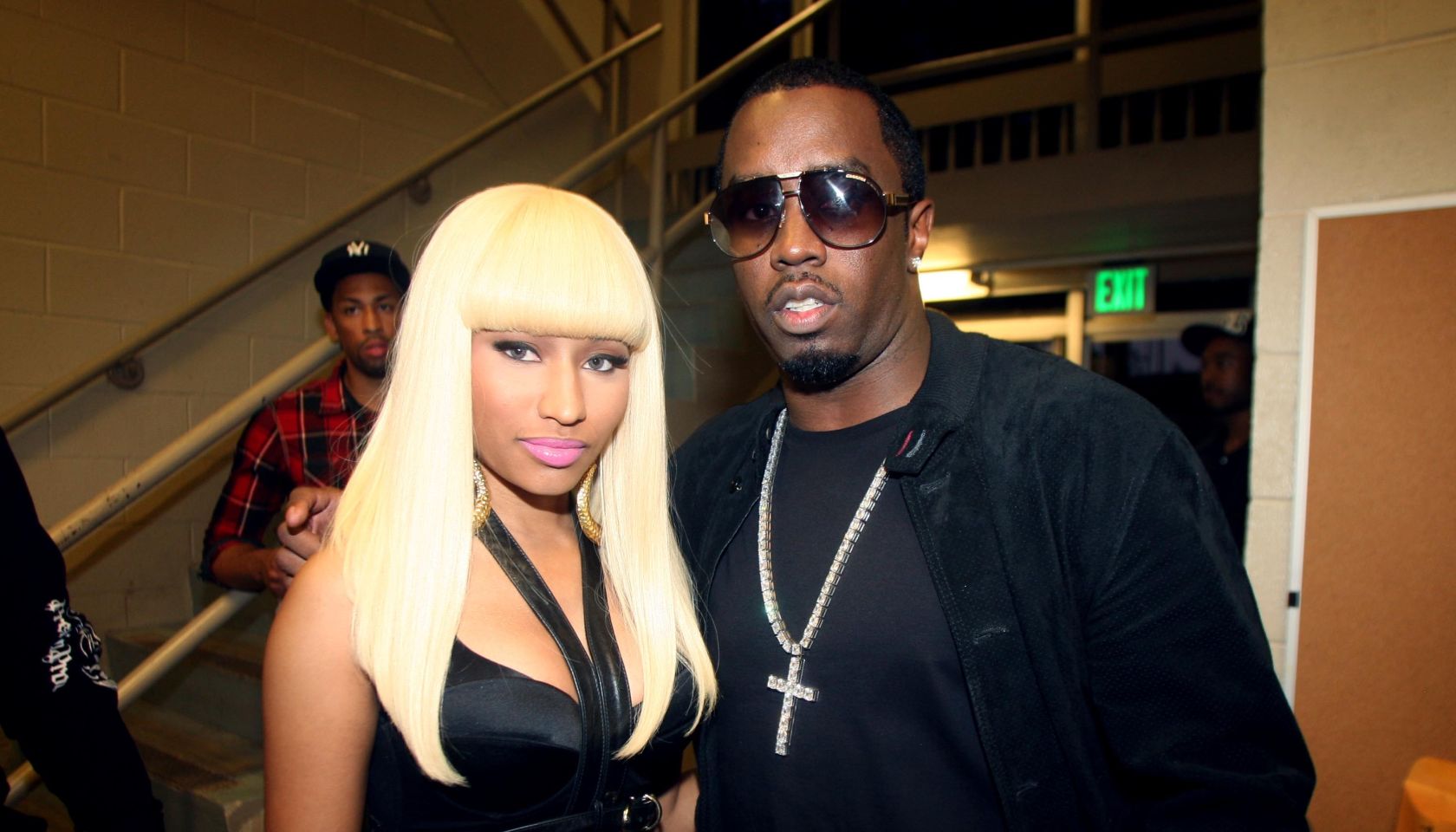Jaxson Hayes LAPD Video Shows Cops Kneel On NBA Player's Neck During Arrest
Video Shows LAPD Cop Kneel On Jaxson Hayes’ Neck Before NBA Player Was Tasered: ‘I Can’t Breathe’

Jaxson Hayes of the New Orleans Pelicans poses for a portrait during the 2019 NBA Rookie Photo Shoot on August 11, 2019, at the Ferguson Recreation Center in Madison, New Jersey. | Source: Elsa / Getty
Bodycam video of the arrest of an NBA player in Los Angeles last month has been released and suggests that responding officers may have employed a similar neck restraint that was used during the police murder of George Floyd in Minneapolis last year.
The Los Angeles Police Department (LAPD) released the footage on Friday, nearly a month after the Jaxson Hayes, a nearly 7-foot tall center for the New Orleans Pelicans, was all but attacked by cops late on July 28 after officers responded to a call that the NBA player was being loud and violent with his girlfriend at his home. His girlfriend’s cousin called police after she said she got text messages from the alleged victim inside the Woodland Hills home.
The edited bodycam footage that was released began with a disclaimer by an officer with LAPD‘s media relations telling viewers what they were about to see.
But what the media relations cop did not say was how the responding officers arguably failed to de-escalate matters, kneeled on Hayes’ neck and deployed their Taser guns multiple times within 2-3 minutes of arriving at the home, where the professional basketball player was awaiting them outside.

Jaxson Hayes after LAPD tasered him. | Source: screenshot / Los Angeles Police Department
The video showed when the LAPD threatened to go inside the home to check on the alleged victim, Hayes asked for a warrant — a request that was immediately shot down by a cop who said curtly that they didn’t need one.
The Associated Press noted that assertion by the LAPD was iffy at best since police would only be allowed to enter without a warrant if “the officers believe a victim is seriously hurt.”
But since Hayes’ own cousin, who was also in the house, came out and corroborated Hayes’ story to the police that the NBA player’s girlfriend “was throwing some stuff” and they were cleaning it up — and because the girlfriend’s cousin told the 911 dispatcher that her cousin was not hurt and that Hayes was not armed — there was seemingly no reason for the cops to threaten to enter the home.
It seems that the threat of entering his home set off Hayes, who then became verbally combative.
TMZ reported that Hayes “shoved” a police officer into a wall — a headline that has attracted much scrutiny because the video doesn’t appear to clearly show that happening.
The video does show, however, an officer pushing Hayes as he tries to use his tall body to physically block the officers from entering his home. Hayes’ cousin also tries to restrain the basketball player.
“Don’t touch him, bro,” his cousin advises Hayes, who complies.
But by that point it was too late, as an officer can be seen grabbing Hayes by the wrist and shoving his cousin away as Hayes yells at the police to get off his property.
Then, another cop grabs Hayes’ other arm before and a struggle ensues before they manage to take him down to the ground as another officer is seen drawing his Taser gun and aiming it directly at Hayes.
During the struggle, an officer is shown kneeling on Hayes’ neck briefly, prompting the NBA player to repeat the fateful words, “I can’t breathe,” through short gasps.
After threatening to use the Taser gun and ordering Hayes to stop resisting, an officer fires the Taser directly into Hayes’ chest.
The AP reported that the company that makes Taser guns has warned against deploying it at or on a person’s chest.
“LAPD officers are trained to aim a stun gun at a person’s back and navel if the Taser’s probes are being used from a distance of 7 to 15 feet (over 2 meters to nearly 5 meters), according to the agency’s policy,” the AP reported. “The Taser should be deployed on the person’s forearm or the outside of their thigh or calf if the officer is using the device’s direct stun feature.”
Watch the troubling video below.
Hayes was ultimately arrested. But in a sign that he may not have broken any laws, no charges have been filed one month after the controversial arrest.
Selective police violence is par for the course for LAPD
It was the latest public debacle and example of policing gone wrong by the LAPD in recent months. It also prompted more questions about the LAPD’s priorities when it comes to enforcing laws in the communities they are charged with protecting and serving.
After all, it wasn’t even two weeks ago when the LAPD failed to arrest anybody at a violent anti-vaccine protest that police were accused of allowing to happen. Video journalist Andrew Kimmel tweeted footage showing the violence erupting, including alleged Proud Boys members throwing punches and kicks at anybody near them — presumably counterprotesters — as the rally descended into chaos. The video also showed one person with their face concealed appearing to repeatedly stab people with a short knife or some other sharp object.
In a departure from the violent tactics employed against Hayes, the LAPD did not make a single arrest at the protest even though it was on the scene and knew in advance about the event that was estimated to have attracted about 500 people.
the LAPD later on its Instagram page blamed the violence on “Antifa and people gathered for the permitted event” despite witnesses claiming it was the Proud Boys who started the rioting. Instead, the LAPD said it had opened up an investigation into the violence.
The LAPD’s assignment of blame to Antifa without proof lent credence to the growing suspicion that the police were trying to cover up for the Proud Boys, who have allegedly enjoyed a cozy relationship with law enforcement in the past, critics said on social media.
LAPD fireworks controversy
Families of two Black men from a South Los Angeles neighborhood blame the reckless actions of the LAPD for their deaths after Auzie Houchins and Ramon Reyes died following the LAPD detonating a large number of explosive materials in the community in June.
While the two men did not die in the blast itself, family and community accounts suggest the blast’s aftermath combined with being displaced from their homes exacerbated both men’s health. Reyes had possibly been injured during the blast when his roof collapsed on him.
Houchins had diabetes, and heart attack was listed among the causes of death. His stepdaughter suggested that the blast and its aftermath strained his health, including being removed from his childhood home and into a hotel without even a kitchen.
Cops keep getting away with ‘murder’ as police reform legislation languishes
Activists advocating for police reform say that this type of violence would be cut down significantly if Congress would just pass the George Floyd In Policing Act, legislation that would hold cops accountable for their actions. However, we are now more than three months past the deadline President Joe Biden gave Congress to put the bill on his desk to sign into law. New reports suggest that if any police reform happens, it will fall well short of the ambitious marks it aimed for, including not eliminating “qualified immunity,” a doctrine generally used to excuse police misconduct that creates a high burden to overcome to hold individual police accountable for their actions.
This is America
SEE ALSO:
George Floyd’s Family Slams LAPD’s ‘Take My Breath Away’ Valentine’s Day ‘Cruelty’
Anti-Maskers Storm Grocery Store, Shopping Mall While LAPD Idly Stands By
















